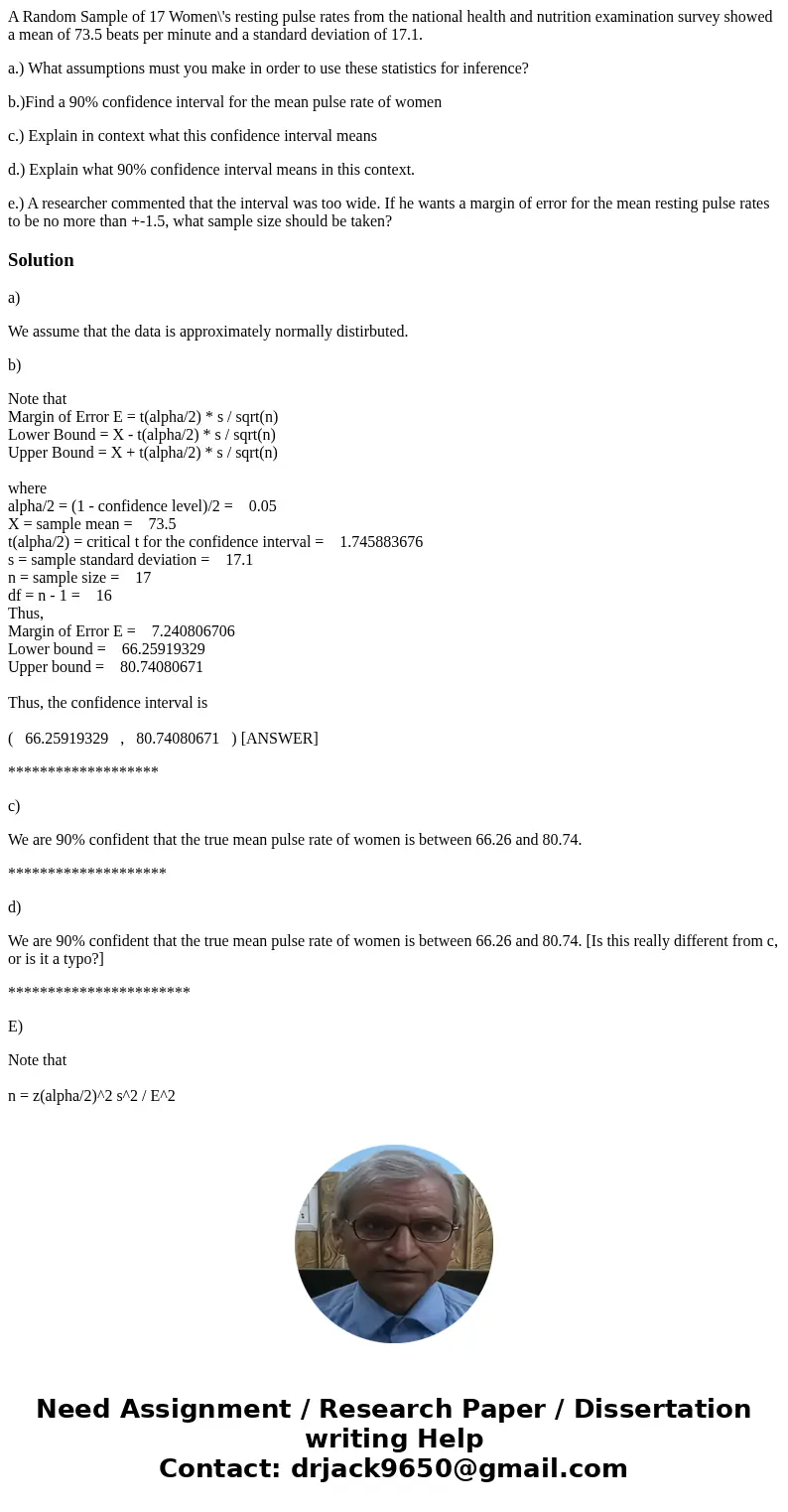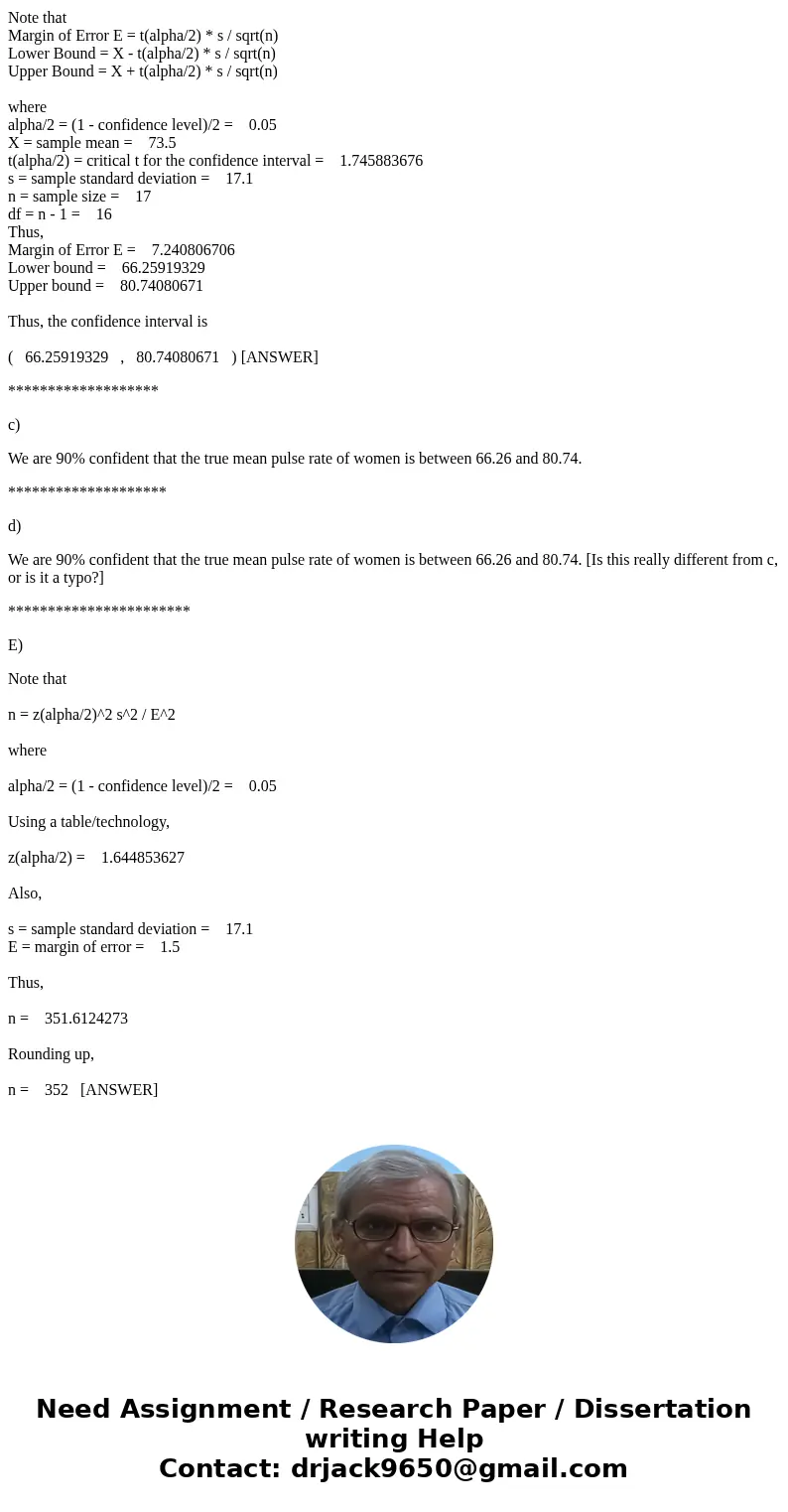A Random Sample of 17 Womens resting pulse rates from the na
A Random Sample of 17 Women\'s resting pulse rates from the national health and nutrition examination survey showed a mean of 73.5 beats per minute and a standard deviation of 17.1.
a.) What assumptions must you make in order to use these statistics for inference?
b.)Find a 90% confidence interval for the mean pulse rate of women
c.) Explain in context what this confidence interval means
d.) Explain what 90% confidence interval means in this context.
e.) A researcher commented that the interval was too wide. If he wants a margin of error for the mean resting pulse rates to be no more than +-1.5, what sample size should be taken?
Solution
a)
We assume that the data is approximately normally distirbuted.
b)
Note that
Margin of Error E = t(alpha/2) * s / sqrt(n)
Lower Bound = X - t(alpha/2) * s / sqrt(n)
Upper Bound = X + t(alpha/2) * s / sqrt(n)
where
alpha/2 = (1 - confidence level)/2 = 0.05
X = sample mean = 73.5
t(alpha/2) = critical t for the confidence interval = 1.745883676
s = sample standard deviation = 17.1
n = sample size = 17
df = n - 1 = 16
Thus,
Margin of Error E = 7.240806706
Lower bound = 66.25919329
Upper bound = 80.74080671
Thus, the confidence interval is
( 66.25919329 , 80.74080671 ) [ANSWER]
*******************
c)
We are 90% confident that the true mean pulse rate of women is between 66.26 and 80.74.
********************
d)
We are 90% confident that the true mean pulse rate of women is between 66.26 and 80.74. [Is this really different from c, or is it a typo?]
***********************
E)
Note that
n = z(alpha/2)^2 s^2 / E^2
where
alpha/2 = (1 - confidence level)/2 = 0.05
Using a table/technology,
z(alpha/2) = 1.644853627
Also,
s = sample standard deviation = 17.1
E = margin of error = 1.5
Thus,
n = 351.6124273
Rounding up,
n = 352 [ANSWER]


 Homework Sourse
Homework Sourse